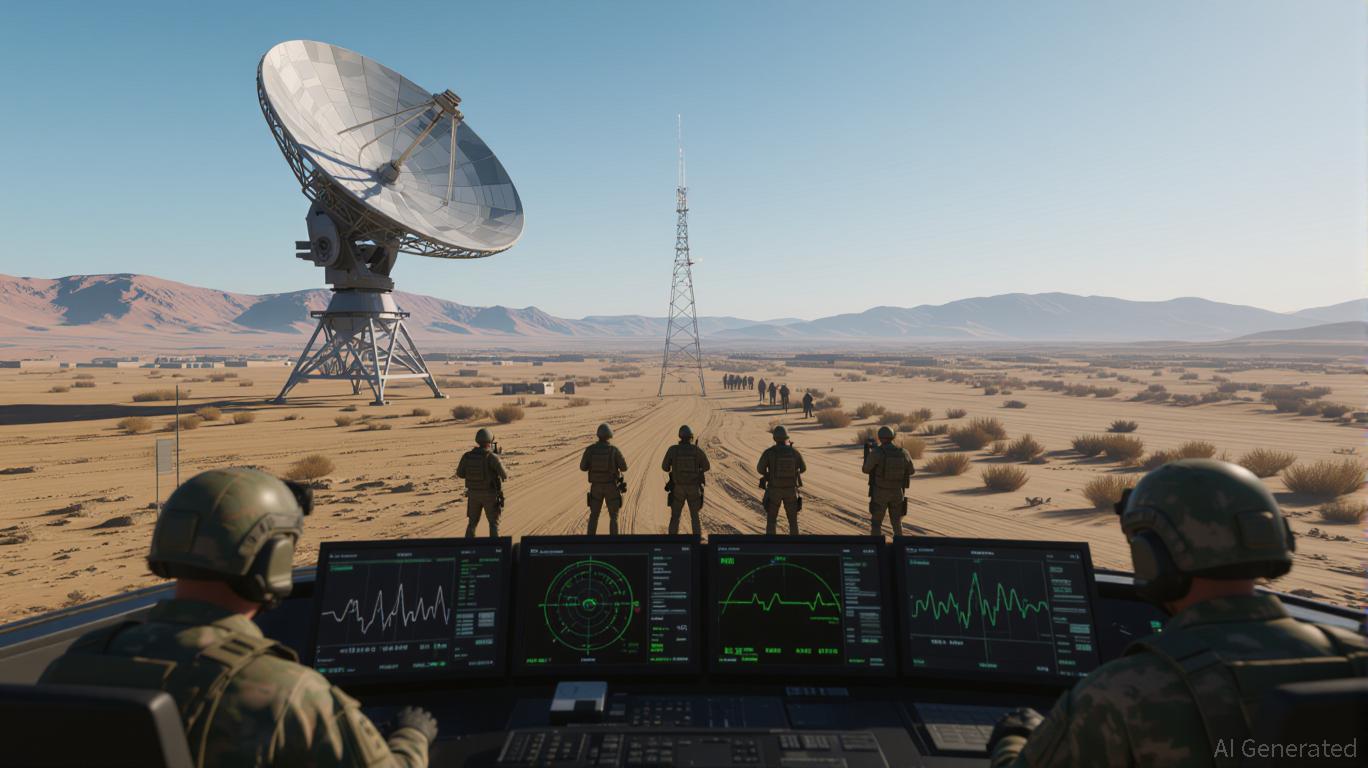
The U.S. defense sector is undergoing a seismic shift, driven by a confluence of geopolitical tensions, technological breakthroughs, and policy-driven modernization. At the heart of this transformation lies Parsons Corporation’s $30 million Army radar contract—a project that, while modest in scale, encapsulates a far larger trend: the industrial tech renaissance reshaping national security. This contract, awarded by the Army’s C5ISR Center, is not merely about upgrading radar systems; it is a harbinger of a broader reallocation of capital toward advanced defense technologies, reshoring, and AI integration. For investors, it signals a pivotal inflection point in the defense industrial base, where innovation and procurement are aligning to create long-term value.
The Radar Contract: A Microcosm of Strategic Priorities
Parsons’ work on the Army’s C5ISR Radar mission underscores the urgency of countering emerging threats such as hypersonic weapons and advanced battlefield communications. The contract’s focus on affordable, modular radar development—spanning modeling, simulation, and prototype fabrication—reflects a shift from monolithic systems to agile, software-defined architectures. This approach mirrors the Pentagon’s broader push for “software-first” systems, where adaptability and rapid iteration trump traditional, rigid hardware-centric models.
The project’s emphasis on survivability and performance in contested environments also aligns with the Department of Defense’s (DoD) 2025 National Defense Industrial Strategy, which prioritizes domestic supply chains and technological self-reliance. By embedding AI and machine learning into radar analytics, Parsons is not just enhancing detection capabilities but also reducing the cognitive load on operators—a critical edge in high-tempo combat scenarios.
The Industrial Tech Renaissance: Reshoring, AI, and Geopolitical Imperatives
The $30 million radar contract is part of a $5.4 billion surge in defense-related investments since 2020, fueled by legislation like the CHIPS Act and the Inflation Reduction Act. These policies are accelerating the reshoring of critical components, from semiconductors to advanced sensors, while incentivizing domestic manufacturing. For instance, the DoD’s focus on reshoring has led to a 30% increase in contract awards for companies with U.S.-based production facilities, a trend that benefits Parsons’ existing infrastructure in states like Texas and Virginia.
Simultaneously, AI is becoming the linchpin of modern defense systems. From autonomous drones to predictive maintenance algorithms, the integration of AI hardware and software is redefining operational efficiency. Parsons’ work on the Golden Dome missile defense initiative—part of a $2.2 billion MDA contract—exemplifies this shift. By leveraging AI to fuse data from disparate radar systems, the company is enabling real-time threat assessment, a capability that could become a standard in future defense procurements.
Investment Opportunities in the New Defense Landscape
For investors, the industrial tech renaissance presents two key opportunities:
1. Defense Tech Startups with Modular Capabilities: Companies like Anduril and Palantir, which specialize in AI-driven command systems, are gaining traction. Their ability to deliver scalable, software-centric solutions aligns with the DoD’s push for rapid deployment.
2. Established Contractors with Reshoring Expertise: Parsons, with its $8.9 billion backlog and strategic acquisitions (e.g., Chesapeake Technologies International), is positioned to benefit from the DoD’s emphasis on supply chain resilience. Its recent $169.5 million ANSol Tank Farm project at Holston Army Ammunition Plant further illustrates its role in modernizing the Organic Industrial Base.
However, success in this sector requires more than technical prowess. Companies must navigate complex procurement cycles, align with long-term programs of record (e.g., Golden Dome), and demonstrate agility in a classified environment. For example, the DoD’s recent shift to Other Transaction Authority (OTA) agreements—which bypass traditional bidding processes—has opened doors for startups but demands a nuanced understanding of regulatory frameworks.
Risks and Considerations
While the outlook is optimistic, investors should remain cautious. Geopolitical volatility could disrupt funding timelines, and the DoD’s emphasis on cost-effectiveness may pressure margins. Additionally, the sector’s reliance on government contracts means that policy shifts—such as a change in administration’s defense priorities—could alter the landscape.
Parsons’ recent Q2 2025 results highlight these dynamics. Despite a 5% revenue decline due to a confidential contract reduction, the company’s Federal Solutions segment reported $75.6 million in adjusted EBITDA, underscoring its profitability in high-margin defense work. Its 14% organic growth in the Critical Infrastructure segment further demonstrates diversification into resilient markets.
Conclusion: A Strategic Bet on the Future of Defense
The industrial tech renaissance is not a fleeting trend but a structural shift in how the U.S. approaches national security. Parsons’ radar contract, while a single project, is emblematic of a larger movement toward innovation, resilience, and technological dominance. For investors, this means prioritizing companies that can bridge the gap between cutting-edge R&D and scalable, mission-critical solutions.
As the DoD continues to allocate billions toward modernization—$22 billion for FAA air traffic control upgrades alone in 2025—the defense sector will remain a cornerstone of industrial growth. Those who recognize the interplay between geopolitical urgency, AI integration, and reshoring will find themselves well-positioned to capitalize on the next decade of defense innovation.
link






More Stories
What’s The Difference Between Strep Throat And A Sore Throat?
Scratchy Throat: 13 Possible Causes (& What to Do)
What’s making your fall allergies flare up